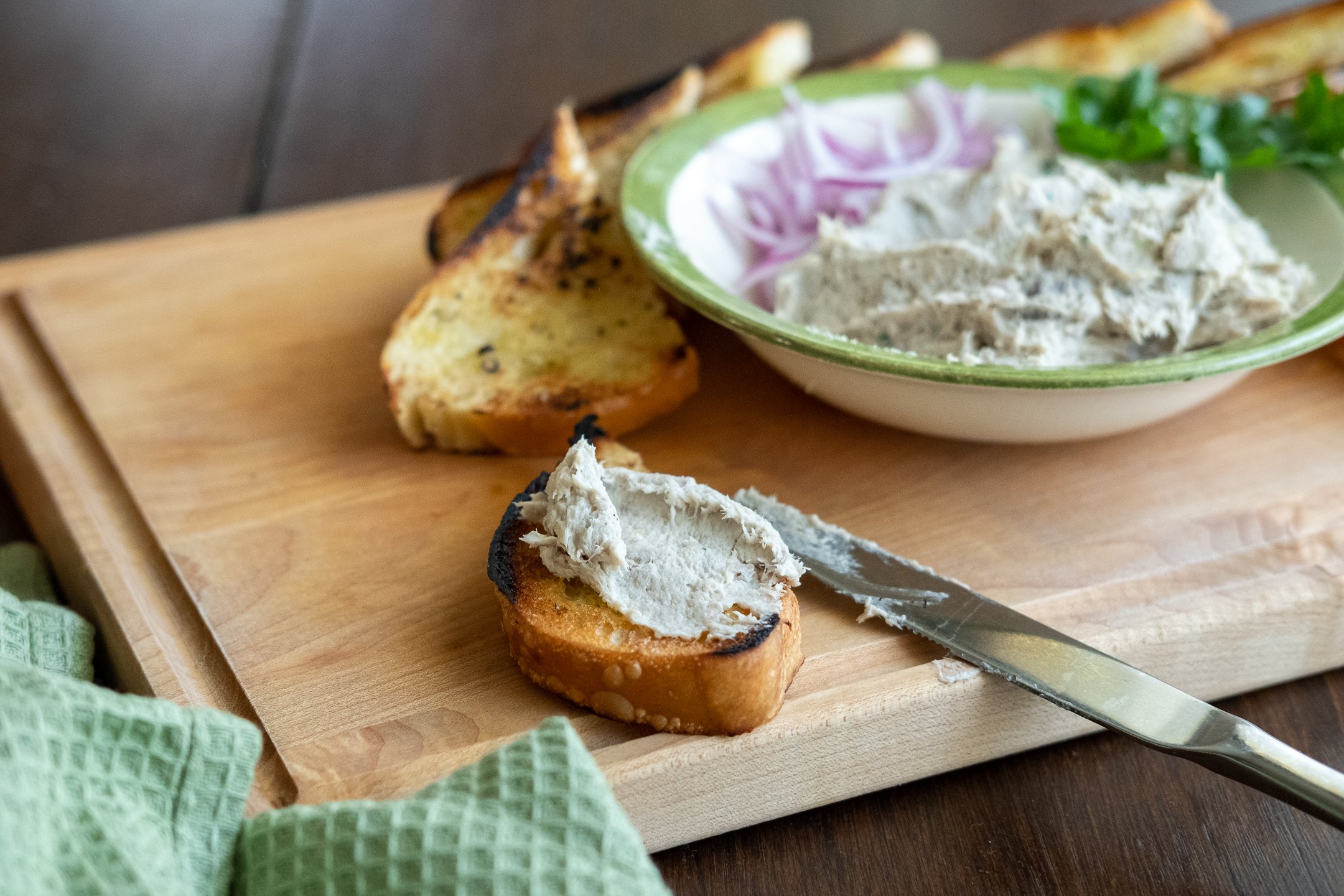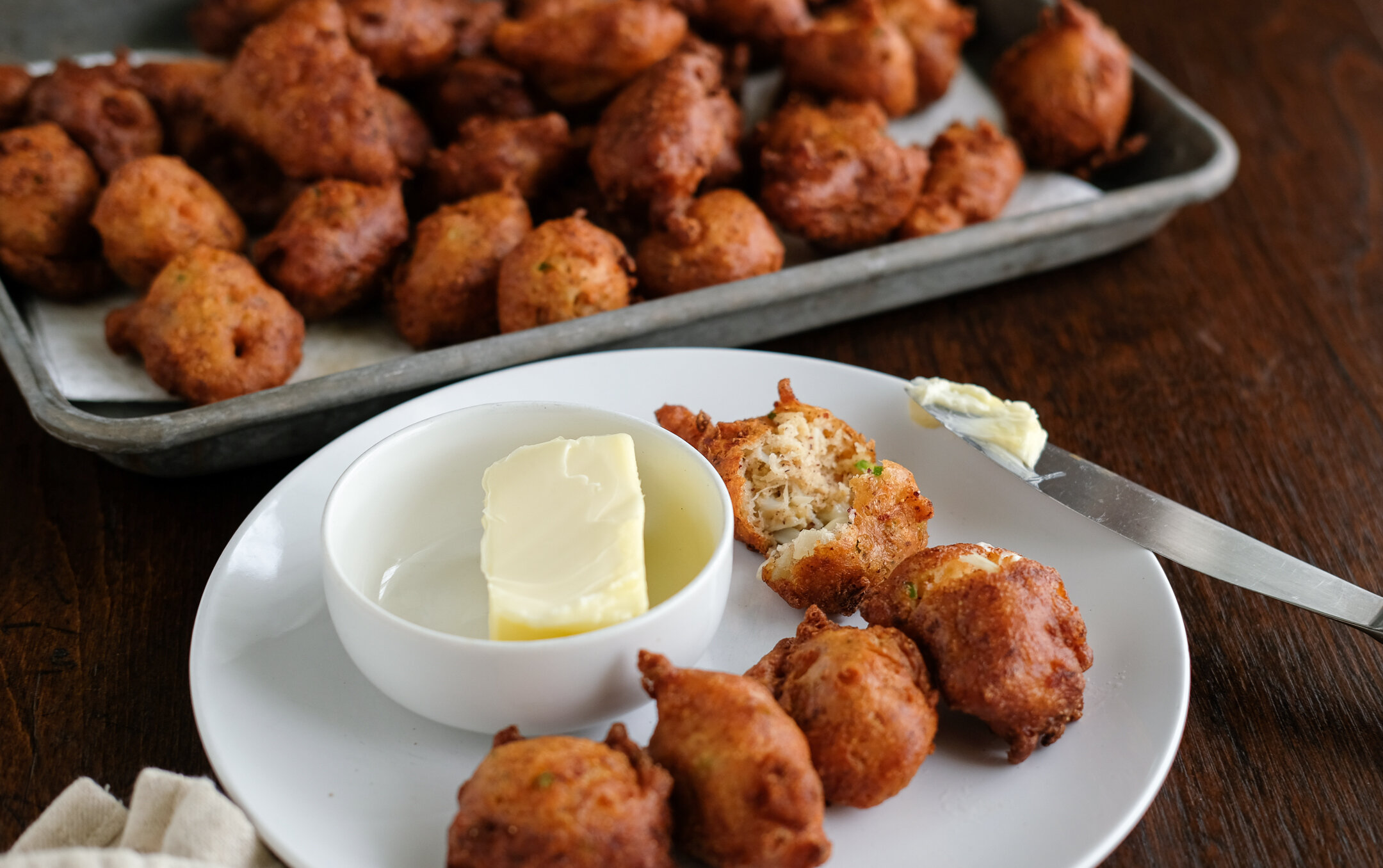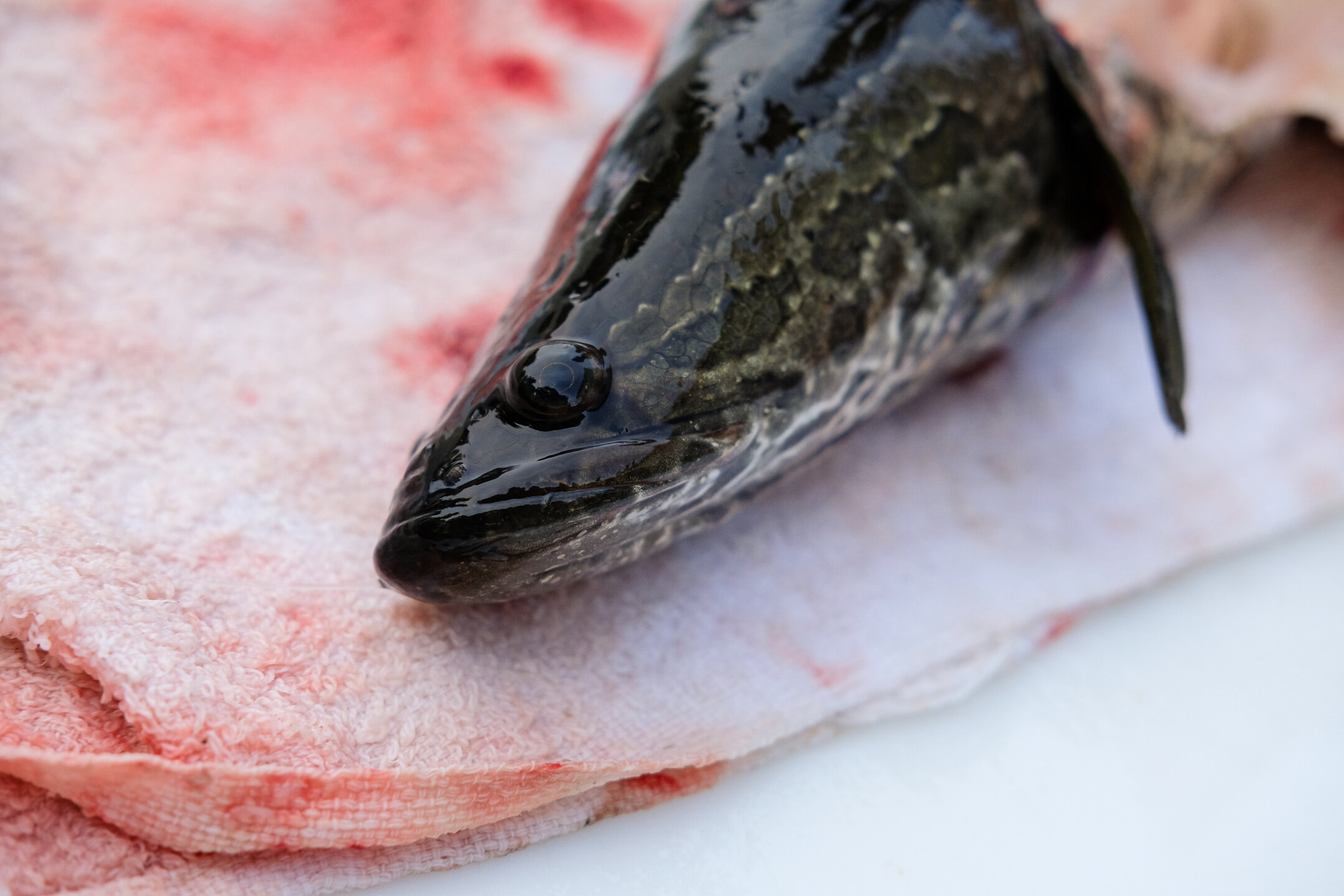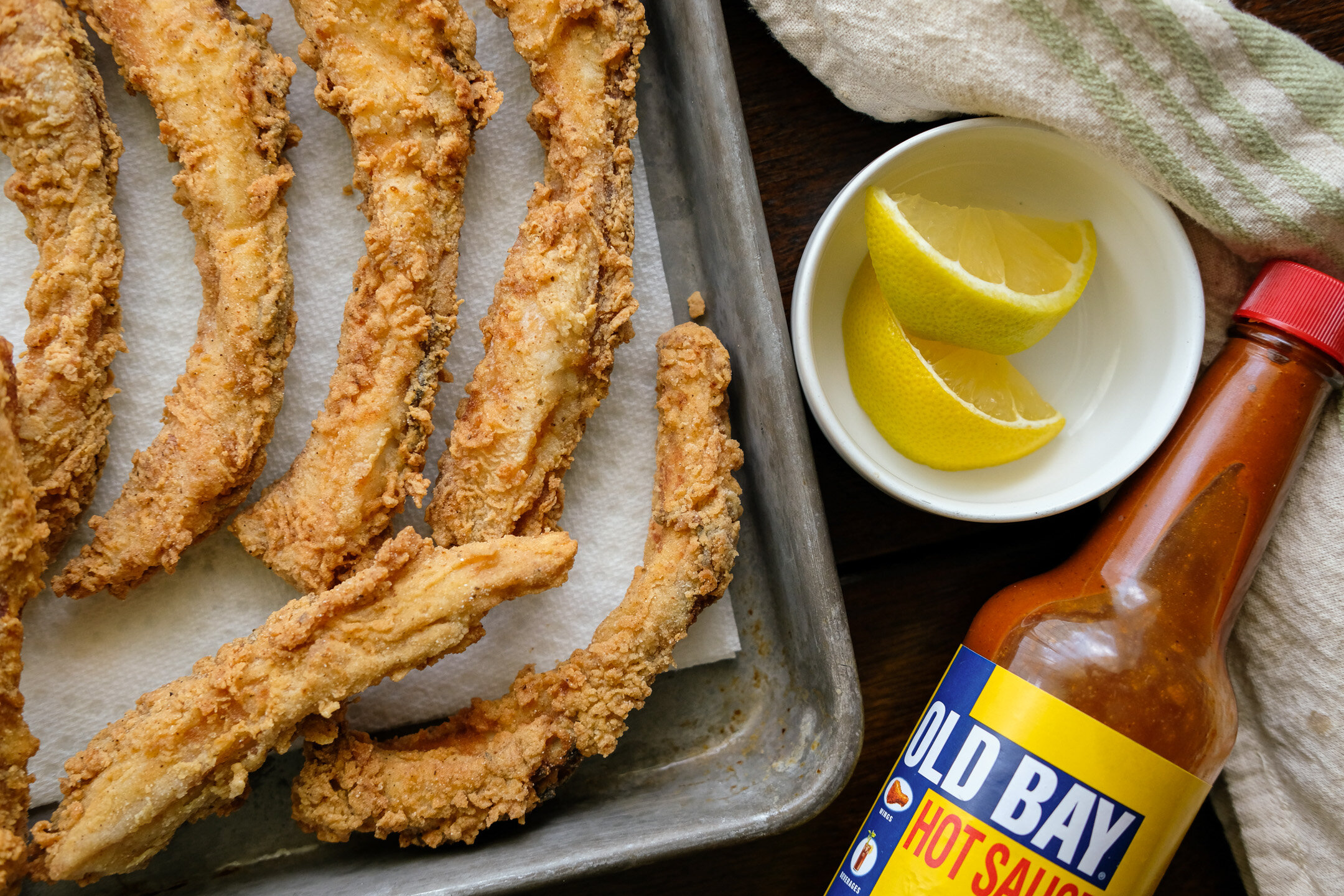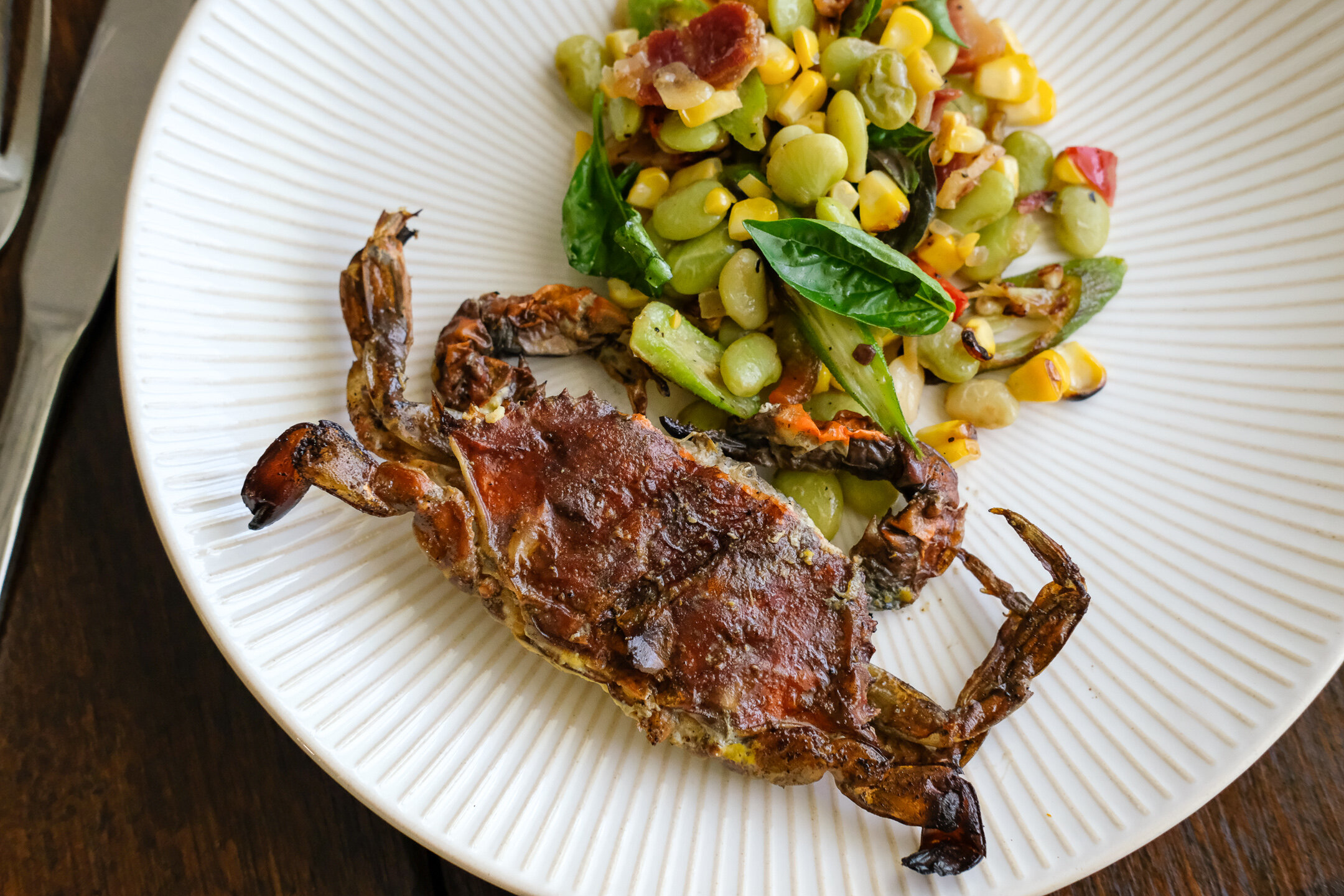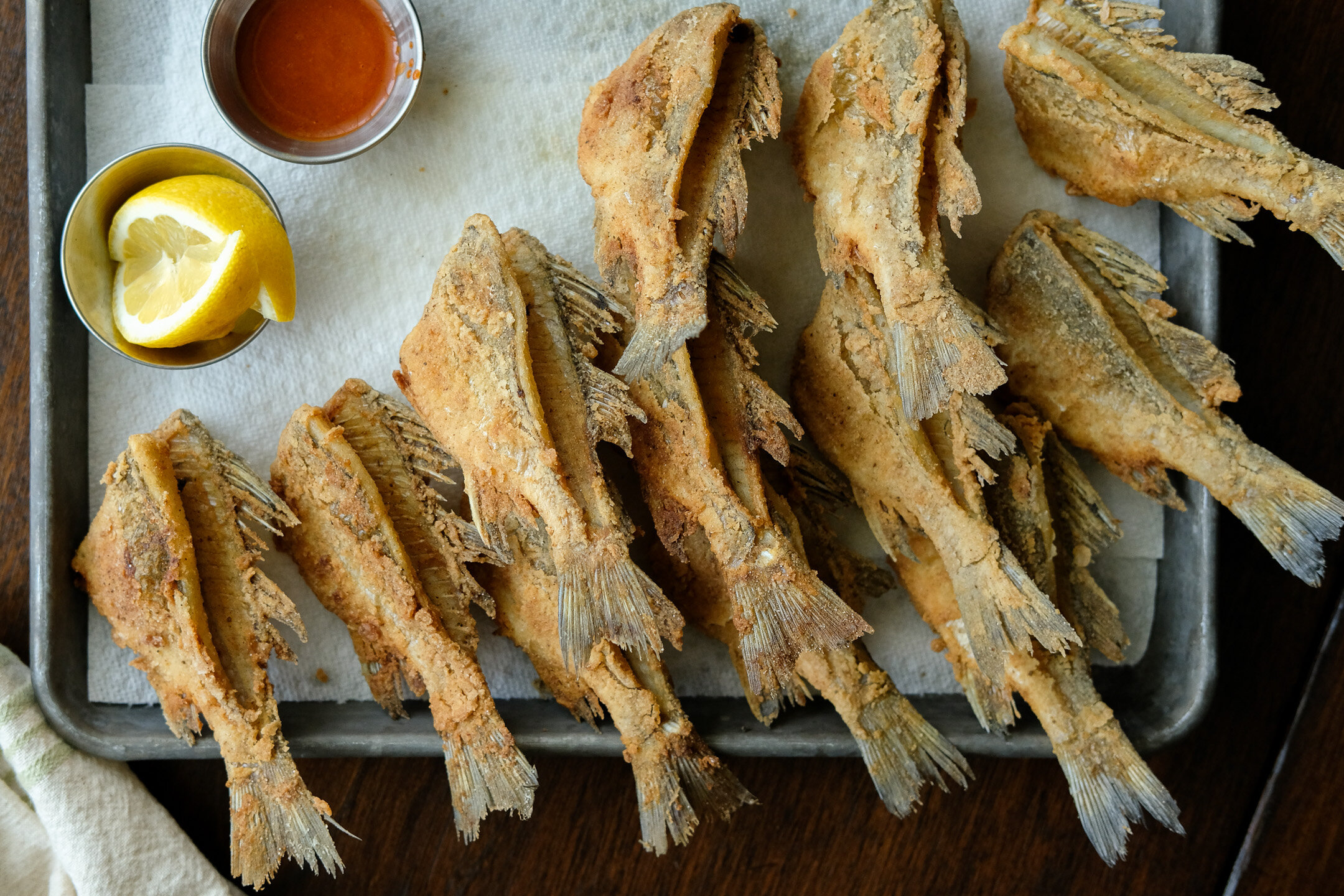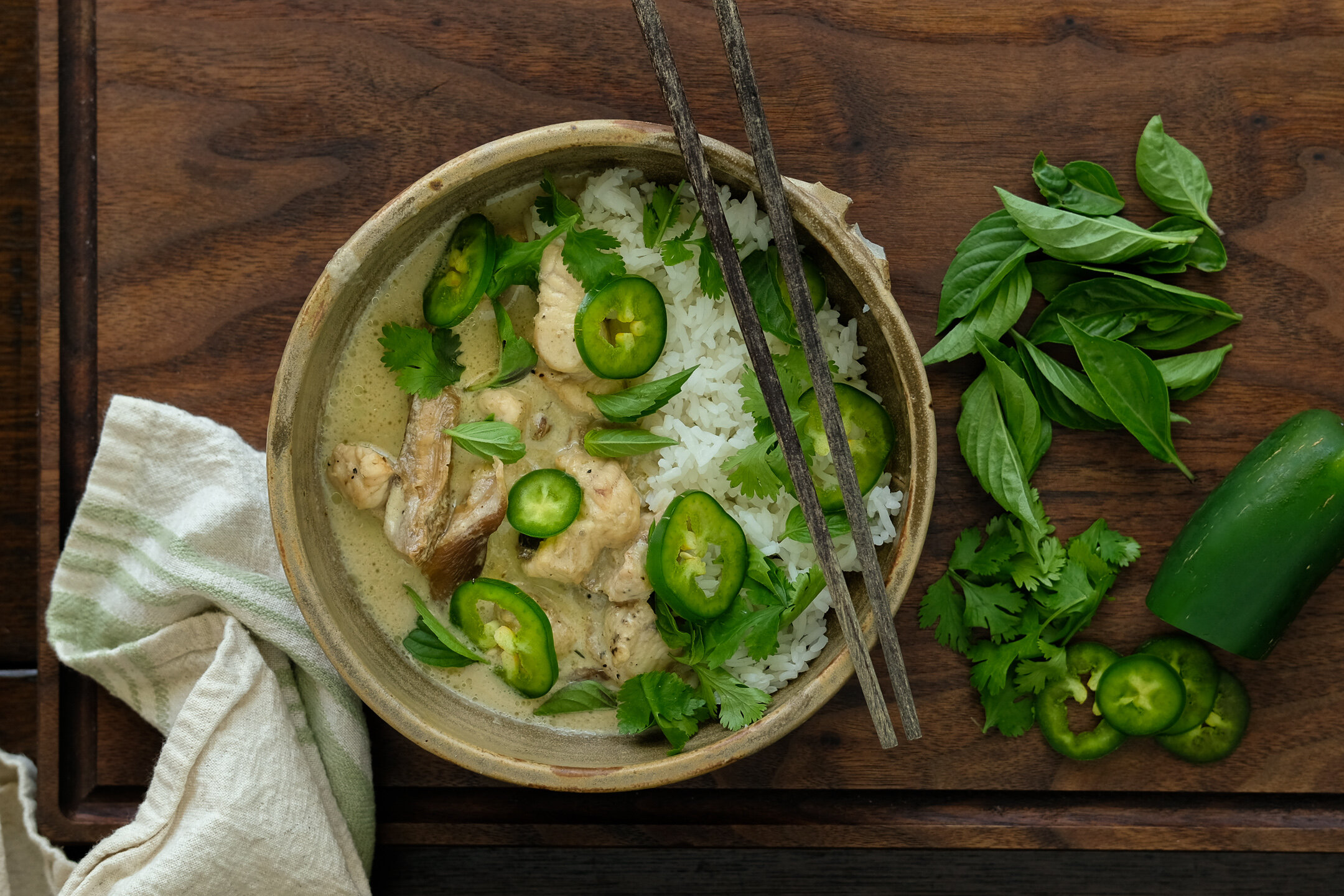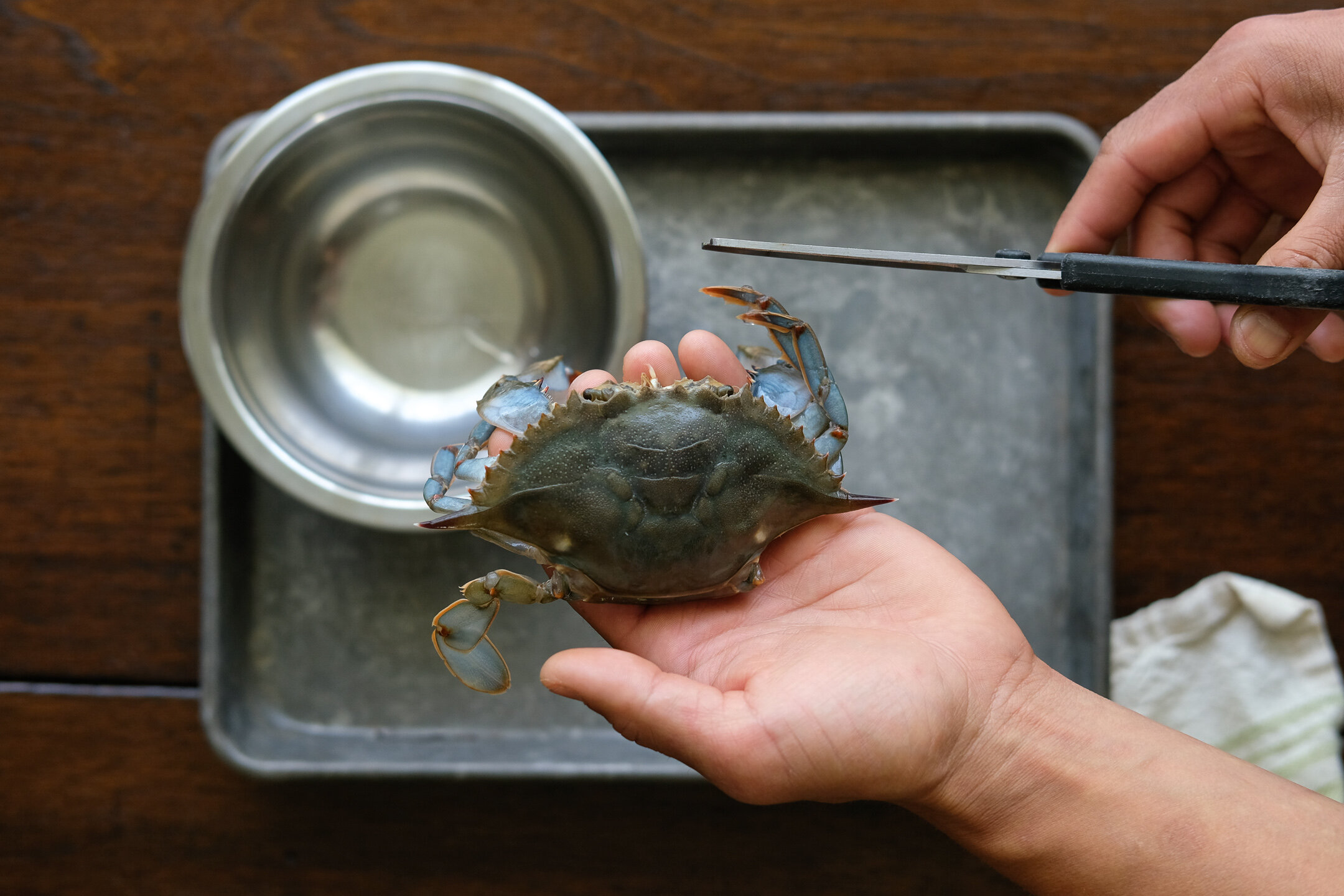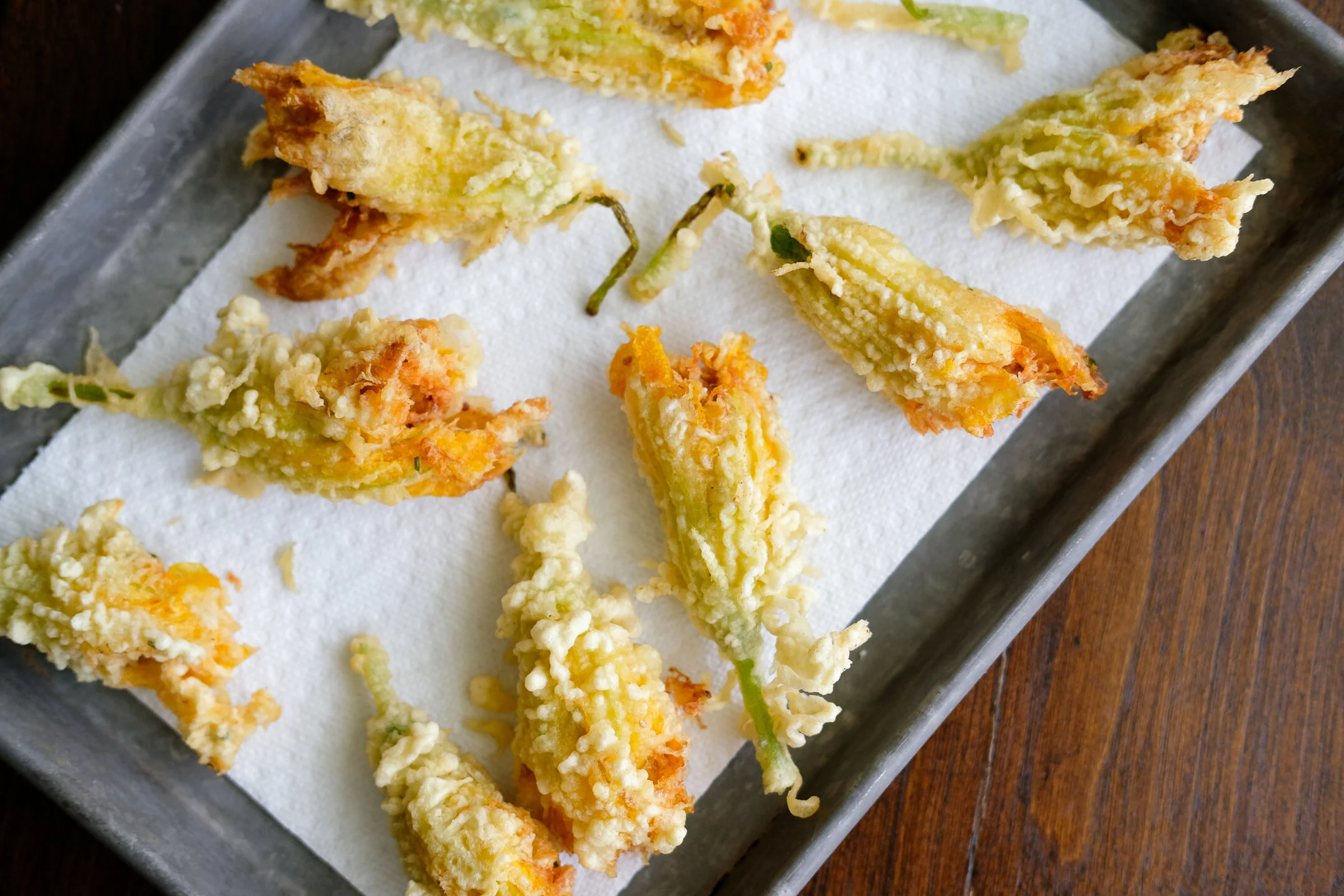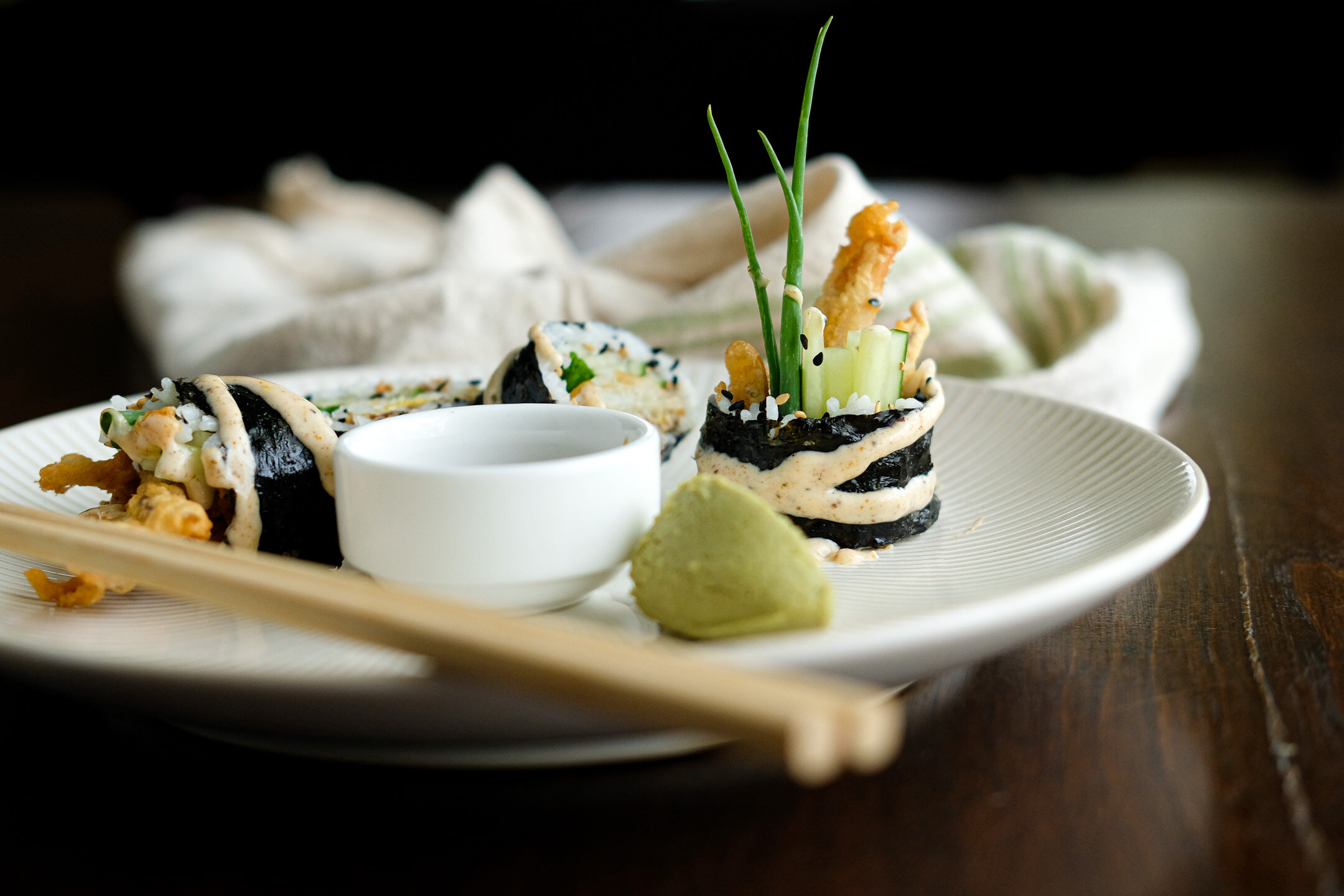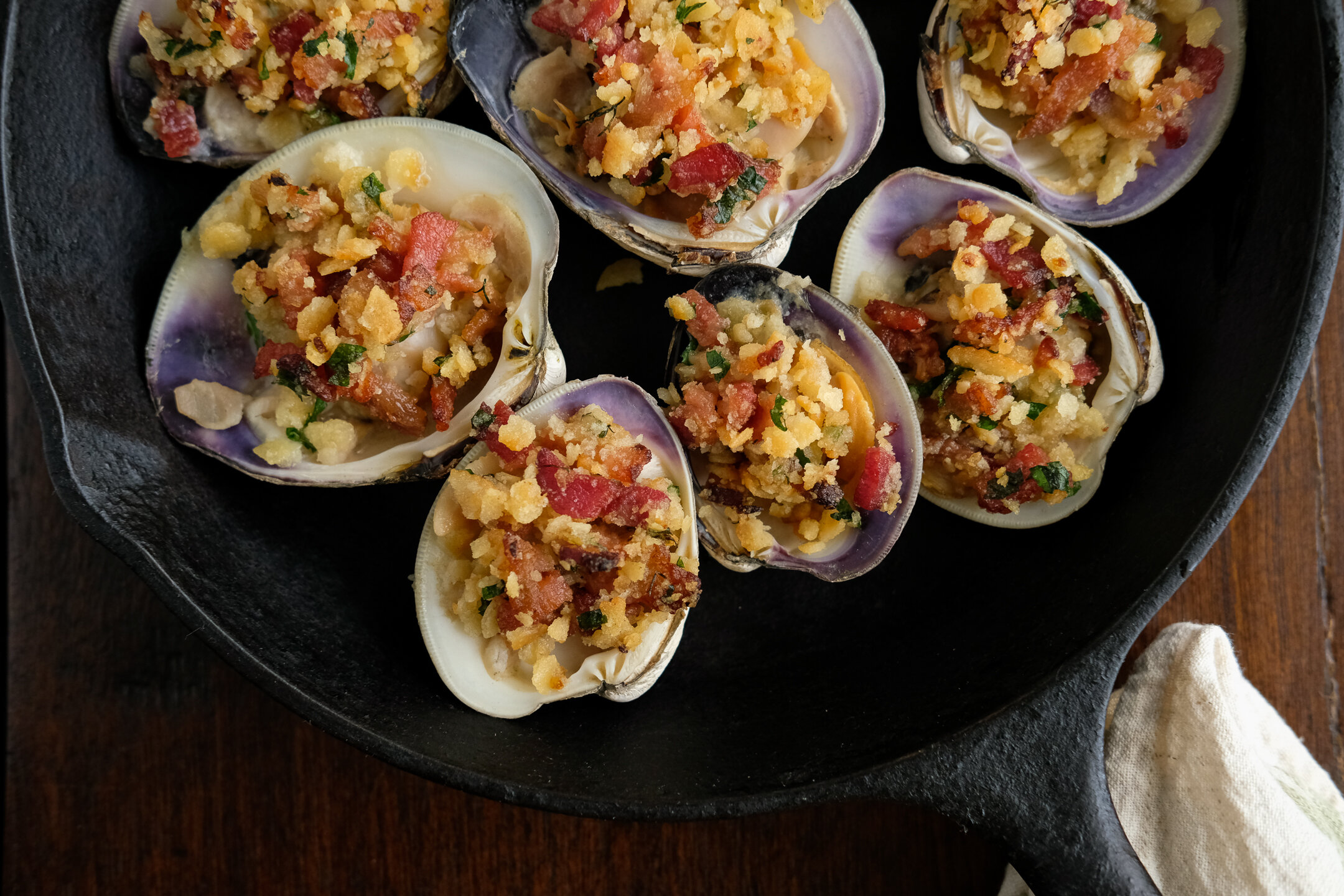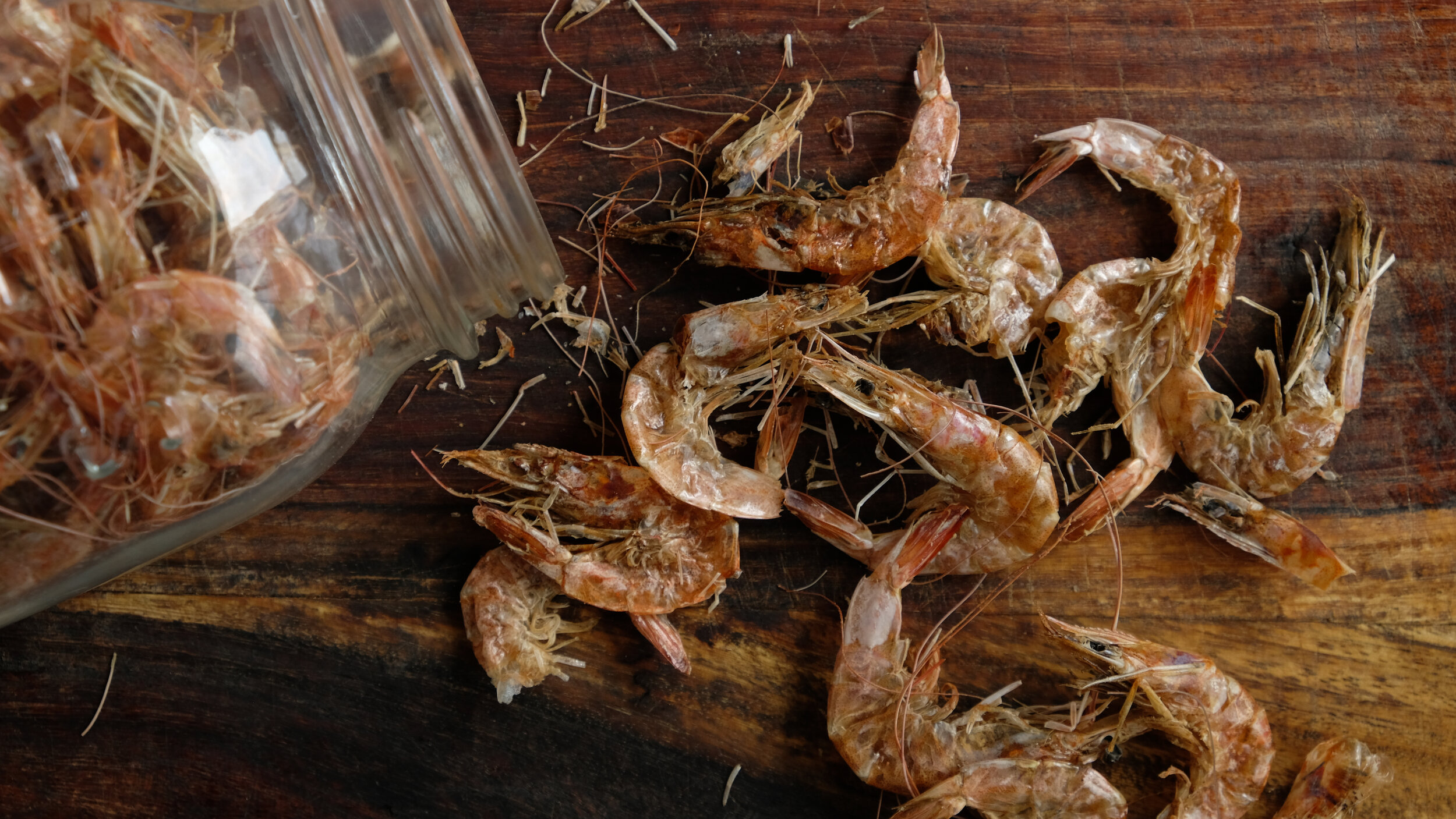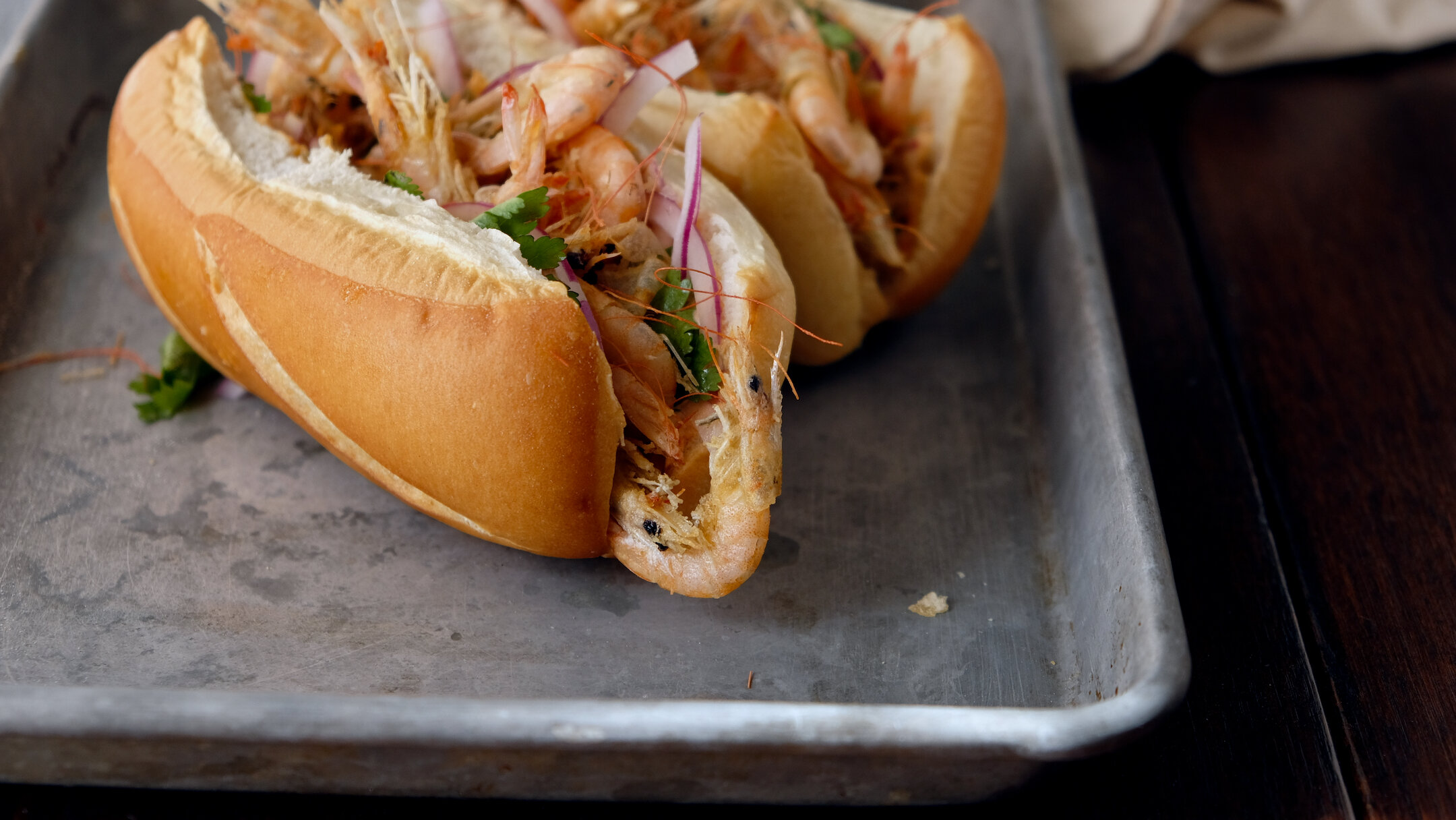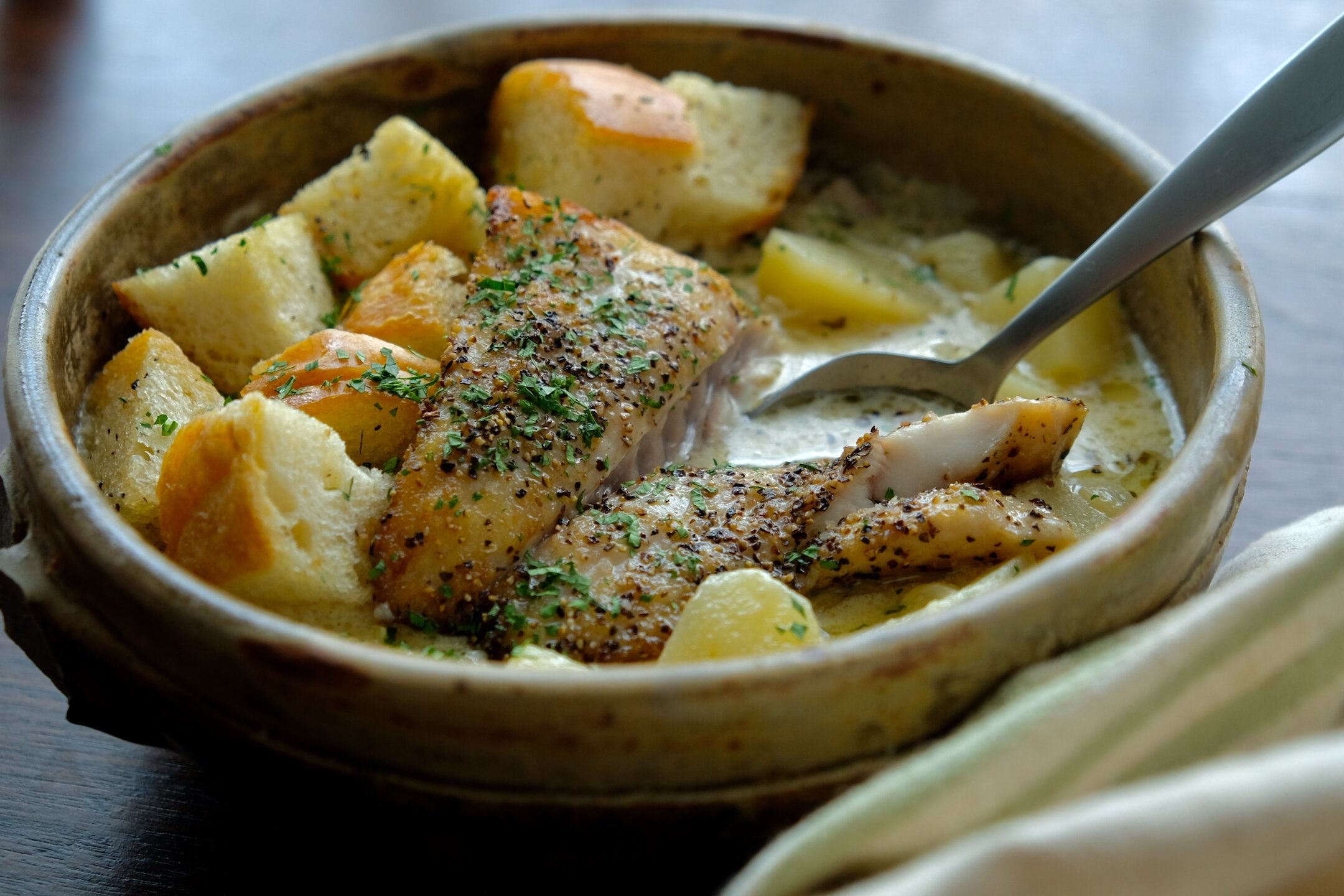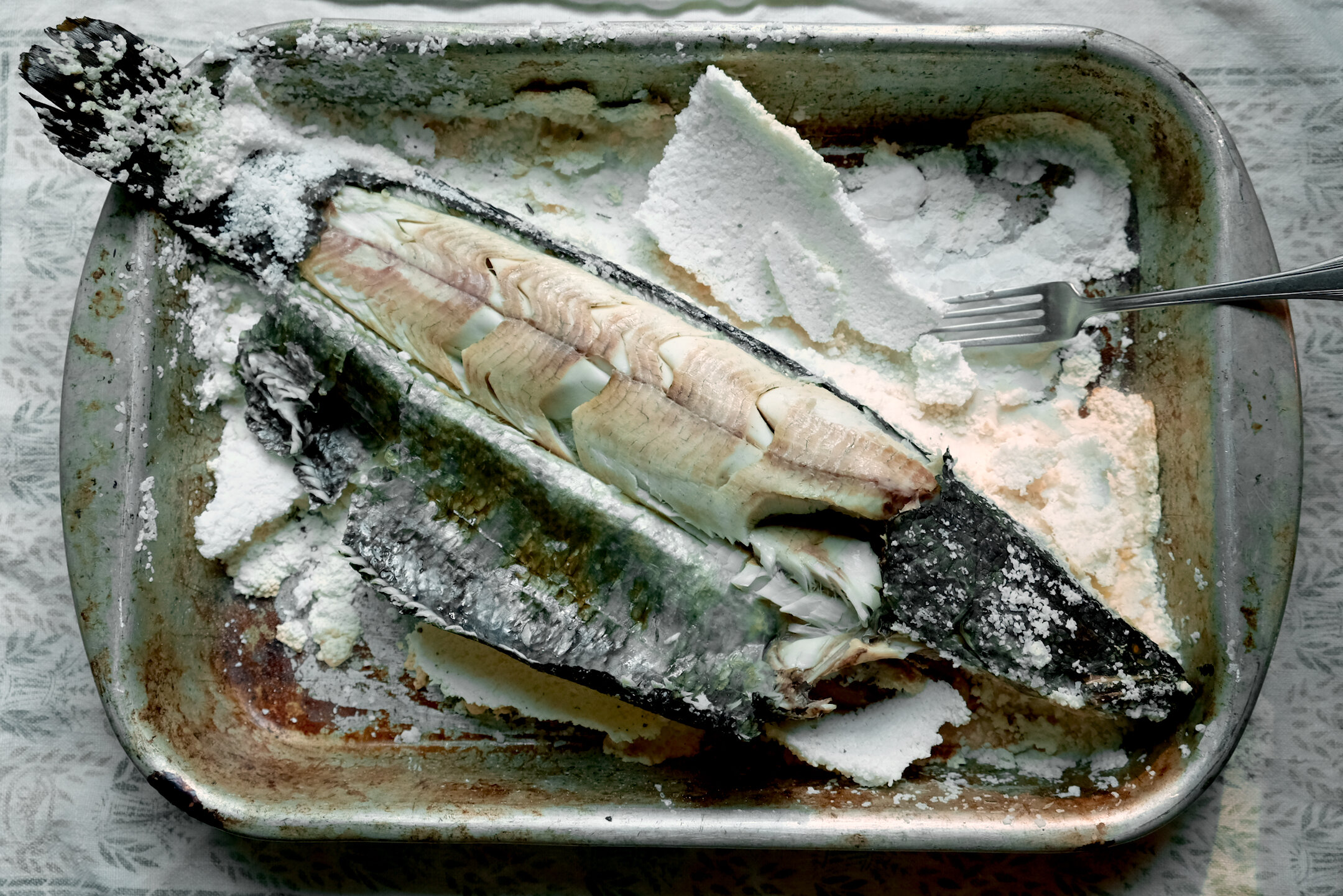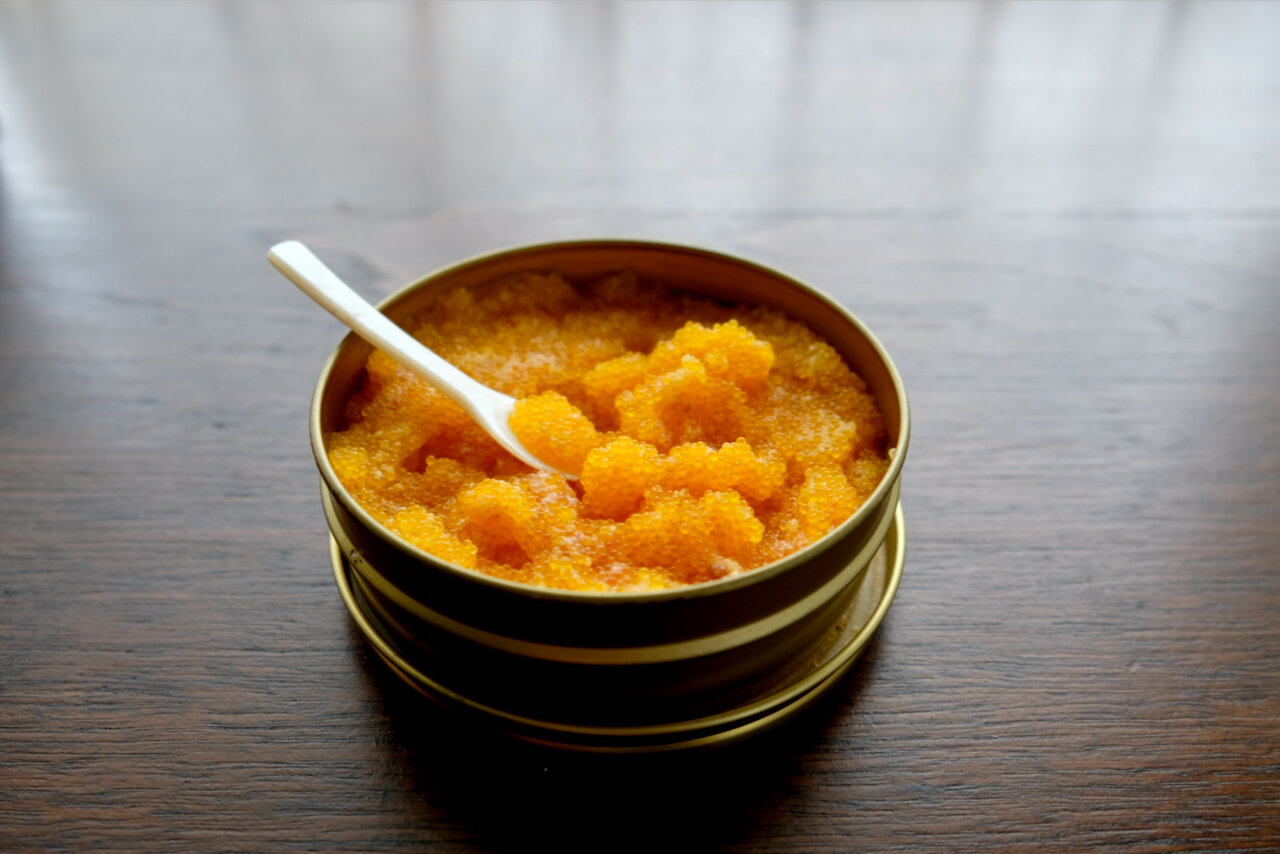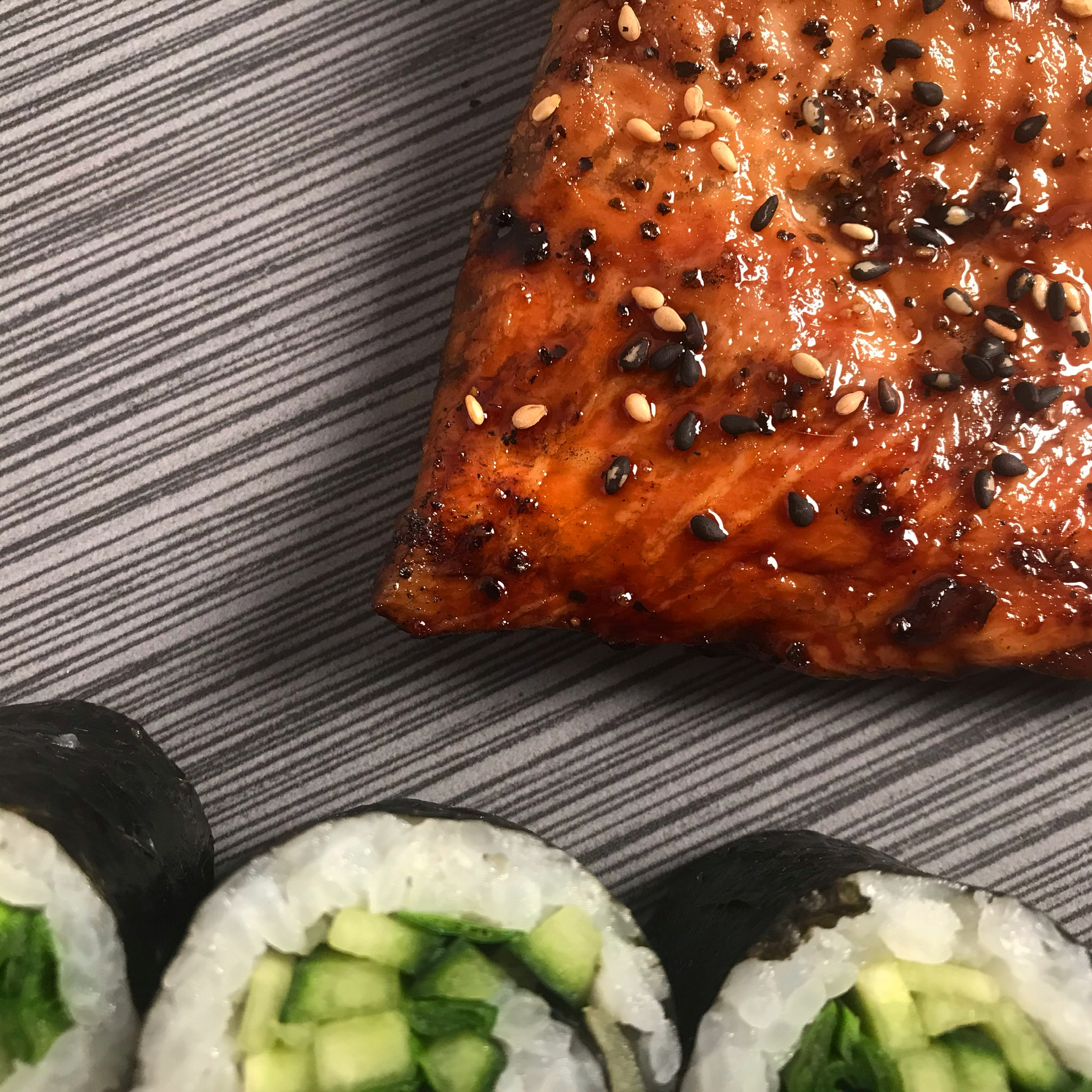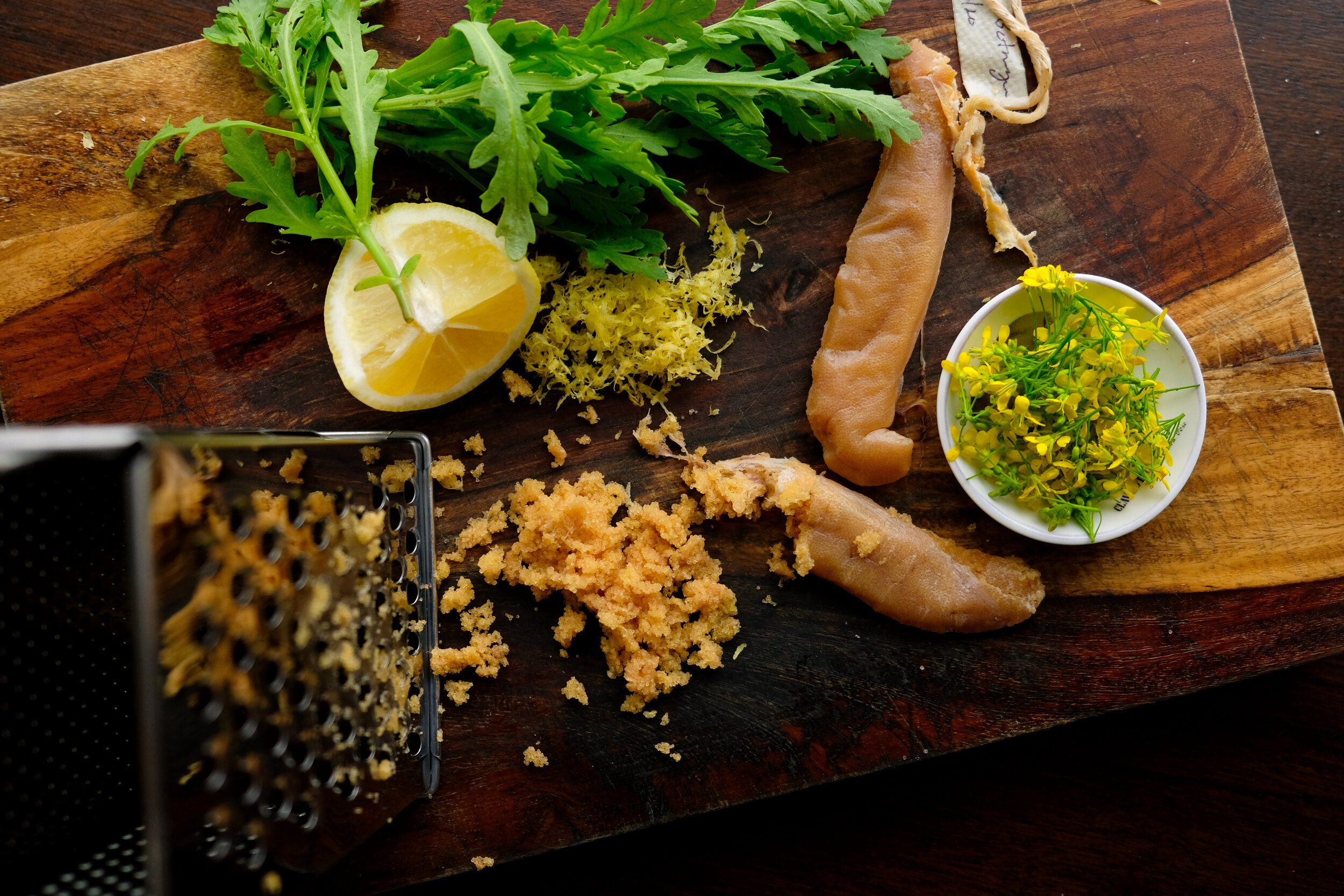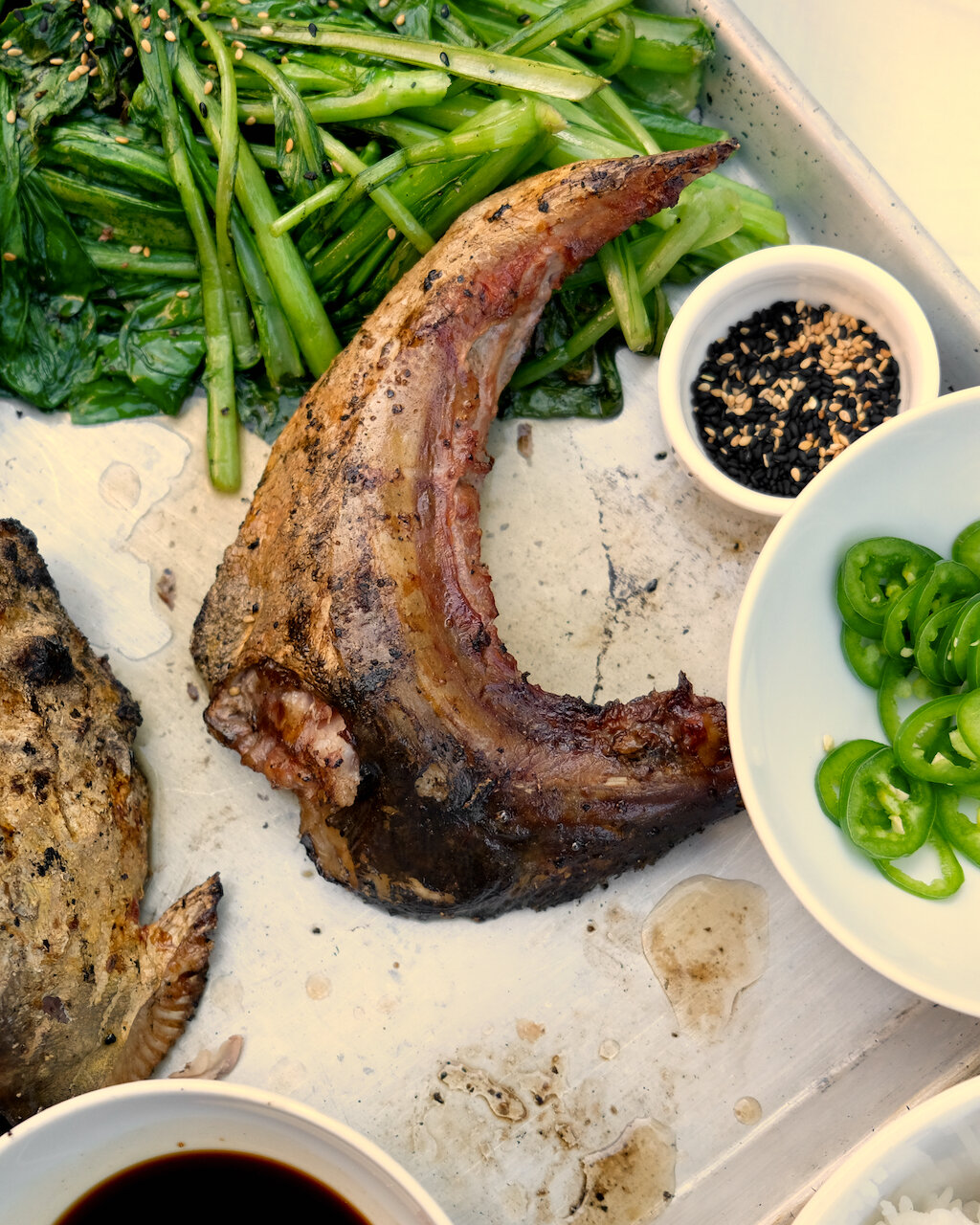Smoked Bluefish
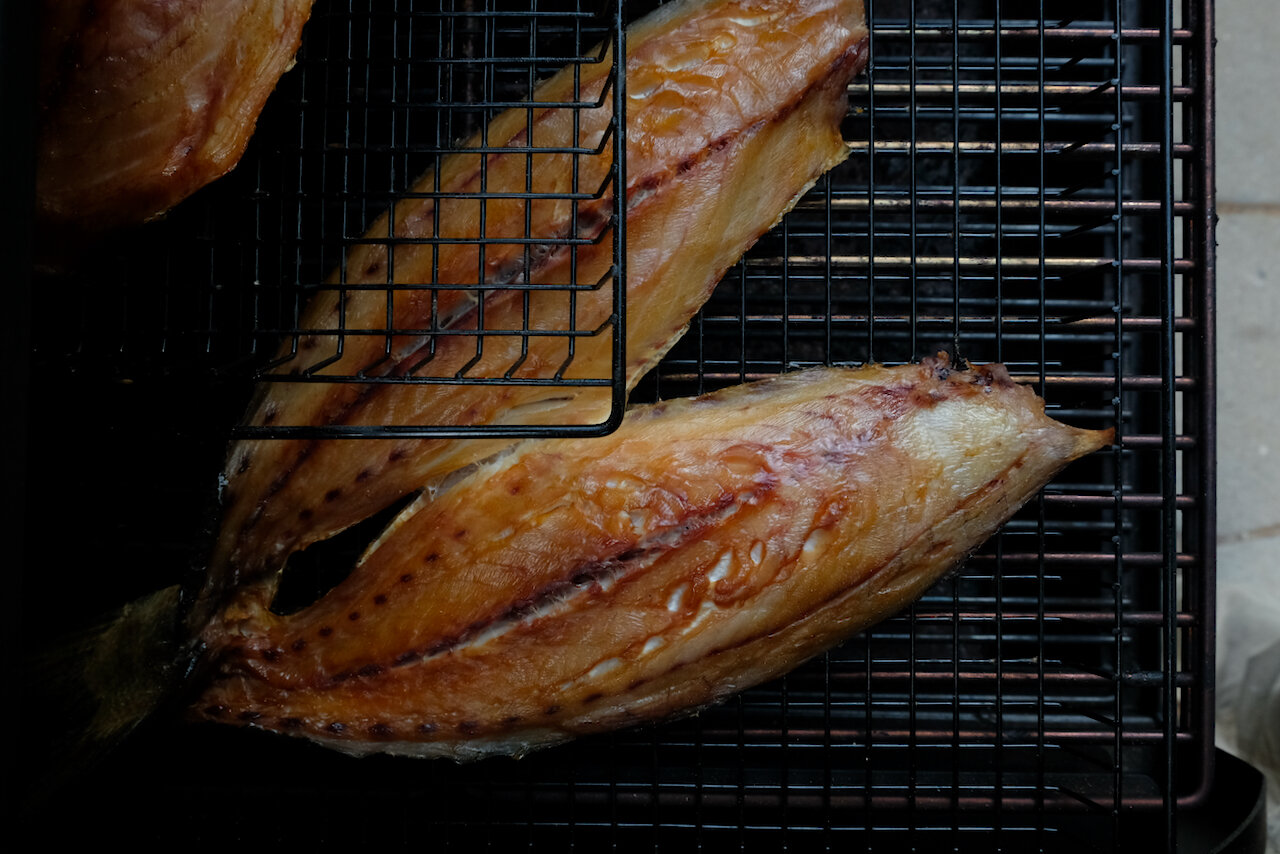
There’s nothing like a bluefish blitz.
On a hot, windless, and flat day, the sight of these sharp toothed, manic, pelagic fish slashing at a ball of bait on the surface is heart-stopping. Everyone on the boat starts frantically re-rigging, and the first one to be able to cast their bucktail or spoon into the feeding frenzy comes out of it with a good fight and some excellent, but ephemeral, table fare. We almost never specifically target blues, but when a school comes marauding through our fishing grounds, the gloves come off and we pitch everything we have at them to try to fill the cooler.
Our most memorable bluefish day was a few years back, when we were still getting our feet wet with fishing in the Chesapeake Bay. We launched our tiny boat and headed a mile offshore on a dead calm day to some structure that we thought might hold spadefish. Out of nowhere, a big school of bluefish cruised through, and we quickly re-rigged with bucktails (no leader- we didn’t bring any) and started casting. If you haven’t been in the middle of a blitz, written word will fail to convey the excitement and chaos of it. The fish were everywhere, and the surface of the water boiled with the violence of their feeding activity. We lost more tackle than we’d care to admit, and the bucktails that survived were completely stripped by their sharp teeth- not even the paint was left. At the time, the limit for blues was ten per person, so we pretty quickly filled our cooler. Our friend Cam got bitten AND hooked by the same fish, and just about the whole boat had a sheen from the fish slime, blood and tiny scales that covered everything we touched.
And just like that, it cut off. We had 26 blues in the box quicker than it took me to write this. We kept pitching and pitching, hoping to catch a few more to round out our limit, but they had moved on. The spadefish hanging out on the rocks just a few feet below kept taunting us, but the fun was over and the wind had started to blow out of the west. We pulled anchor and headed to harbor, the tops of the swells just barely breaking over our stern. That night, in camp, we had the most incredible bluefish tacos.
Bluefish gets a bad rap for being fishy, but handled correctly and eaten fresh, they are some of the sweetest, most delicious fish around. They have a higher fat content than some other fish, which is what makes them so tasty, but that fat can also spoil quickly, giving it a fishy taste. Bluefish is best when it’s kept on ice and eaten on the same day. I’ve seen people catching blues and tossing them into an empty bucket on the hot sand and then complain that they don’t like eating them. Don’t be that person- all fish will spoil quickly when treated poorly, but the fattier the fish, the better care should be taken to keep it cold and fresh.
We catch our blues right around the time the water in the shallows of the Chesapeake Bay hits the mid 80s. The water is bathtub warm. You need to get these fish out of the water, dispatched, and iced immediately. We’ve used a pick, a bat and the lid of a cooler to kill bluefish quickly, but our new favorite method is reaching under the gill plate and ripping out the gills. This accomplishes two things- the fish dies quickly, and you’ve bled the meat. We pack the fish with plenty of ice in the cooler, and then, back on shore, keep the fillets on ice as we clean them.
Bluefish is incredible eaten the same day. Fried, broiled, grilled- anything. It’s wonderful. The flesh is delicate in texture and sweet, with a depth and complexity of flavor that I’ve had in few other fish. Fried bluefish tacos, with a little coarse cornmeal in the batter, are a fish camp staple. We recently started experimenting with raw bluefish as well, and the results are surprisingly good. The fillets will hold up for a day or two in the fridge, but lose their sweetness and take on an earthier flavor after the first 24 hours.
With so much good to say about it, bluefish does have one drawback- it does not freeze well. No matter how well you take care of the fish before you fillet it, when thawed, the flesh gets mushy and takes on a stronger smell and flavor. Eat what you can fresh, and if you find yourself coming off a long day on the water with more than you can eat that night, we’ve found the best way to preserve a bluefish bounty is to either can it, with lots of spicy hot sauce, or smoke it and then freeze it.
We’ve long debated posting a recipe for pressure-canned spicy bluefish, but frankly, pressure canning is so incredibly different from the hot water bath canning most people are familiar with, and we don’t want to take the risk of someone using the water bath method and getting sick. But, if you are an avid canner, and know the difference between hot water bath canning and pressure canning, I highly recommend giving it a shot. Use a tested recipe for pressure canned fish, and throw in a dash or two of hot sauce. You can use either fresh or smoked filets.
For the rest of us, there’s smoked bluefish. It makes for a great addition to dips, flaked into hash and omelets, and anywhere else a salty and smoky touch of flavor is needed. As my friend with the bigger boat says, “smoked bluefish is the bacon of the Bay”. When your fish is done smoking, you can freeze it for long-term storage, but I’ll bet it doesn’t last long enough to make it to the freezer.
This is a simple recipe- brine, dry, and then smoke the fish. This recipe makes enough brine for 3-6 fish depending on the size of the fish. We did 8 fillets from fish that were around 5 lbs each.
Smoked Bluefish
Prep time: 1 day
Ingredients:
1 cup sugar
1 cup salt
2 bay leaves
1 tbsp black pepper, whole
3 tbsp soy sauce
2 quarts water
Bluefish (or any other oily fish), scaled & filleted
Method
Combine all ingredients, bring to a simmer and stir to dissolve. Allow the brine to cool to around 40F.
Submerge the fillets in the brine and refrigerate for 12-16 hours.
Remove the fillets from the brine, (discard brine) and place on a wire rack, skin side down. Pat dry, and allow to sit in the refrigerator until the exterior of the fish has somewhat dried out and is tacky to the touch. This is called a “pellicle” and is crucial to smoking fish- smoke won’t penetrate a wet surface well, so you want good pellicle formation for best flavor.
Get your smoker warmed up to around ~225-250F and smoke the fish for 1.5 - 2 hours over plenty of smoke. The fish should cook slowly over this time. When the internal temperature of the fillet is at around 120F, lower the temperature to ~160F and continue to smoke for another 1.5 - 2 hours. The fillets should have a deep smoky color and be firm to the touch but not completely dry.
Remove from the smoker and allow to cool completely before vacuum sealing.












